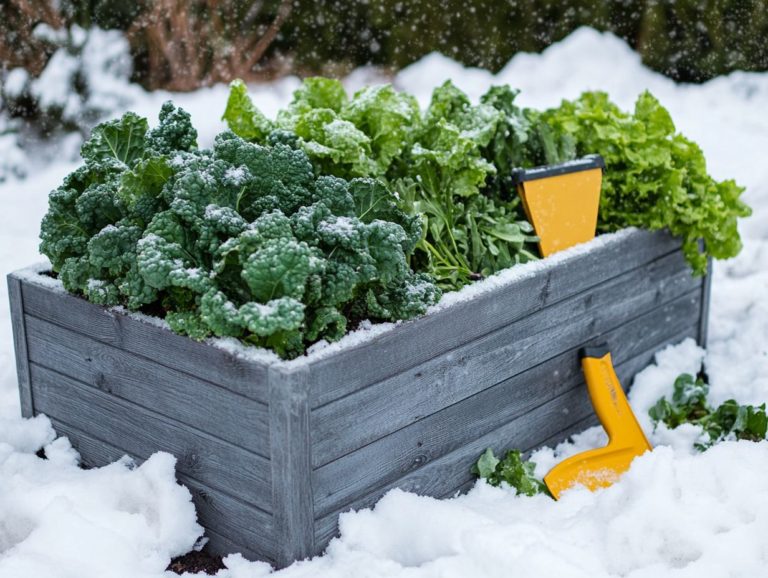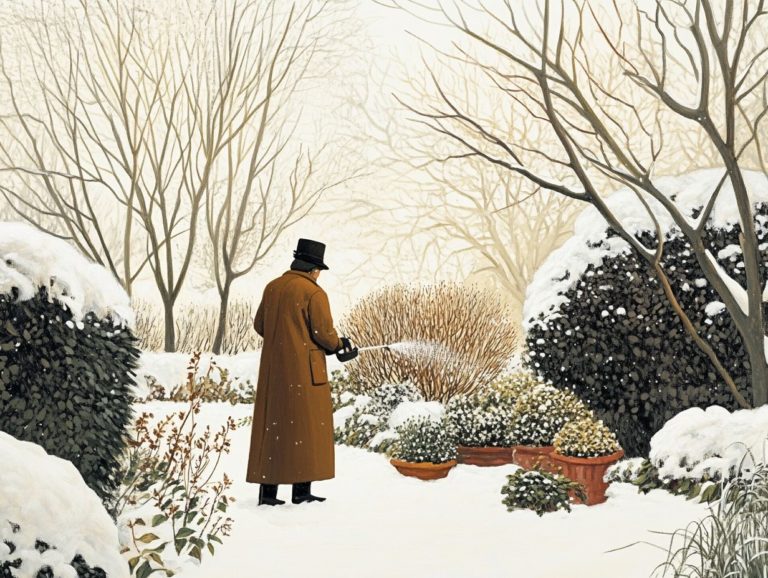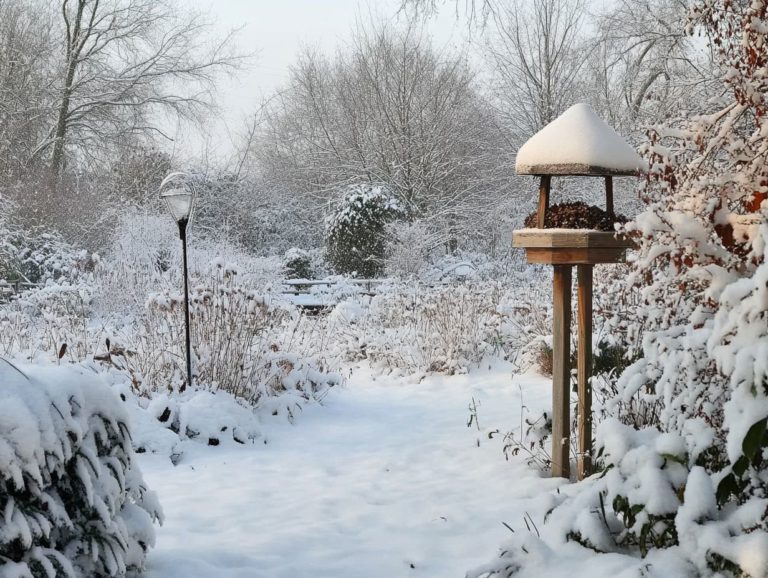What are the Best Practices for Pruning in Winter?
Winter pruning is a key practice for maintaining your plants’ health. It encourages growth and ensures vibrant blooms in spring.
This guide will illuminate the benefits of winter pruning, optimal timing, and effective techniques you can employ. You ll uncover the essential tools needed, learn about common pitfalls to steer clear of, and receive tailored advice for various types of plants.
Whether you re a seasoned gardener or just starting out, this information will empower you to prune with confidence, promoting lush and thriving greenery throughout the year.
Contents
- Key Takeaways:
- Understanding Winter Pruning
- Benefits of Pruning in Winter
- When to Prune in Winter
- Tools and Techniques for Winter Pruning
- Common Mistakes to Avoid
- Best Practices for Different Types of Plants
- Frequently Asked Questions
- What are the Best Practices for Pruning in Winter?
- 1. When is the best time to prune in winter?
- 2. What tools do I need for winter pruning?
- 3. What types of plants should be pruned in winter?
- 4. How much should I prune in winter?
- 5. What are the benefits of pruning in winter?
- 6. Are there any precautions to take when pruning in winter?
Key Takeaways:
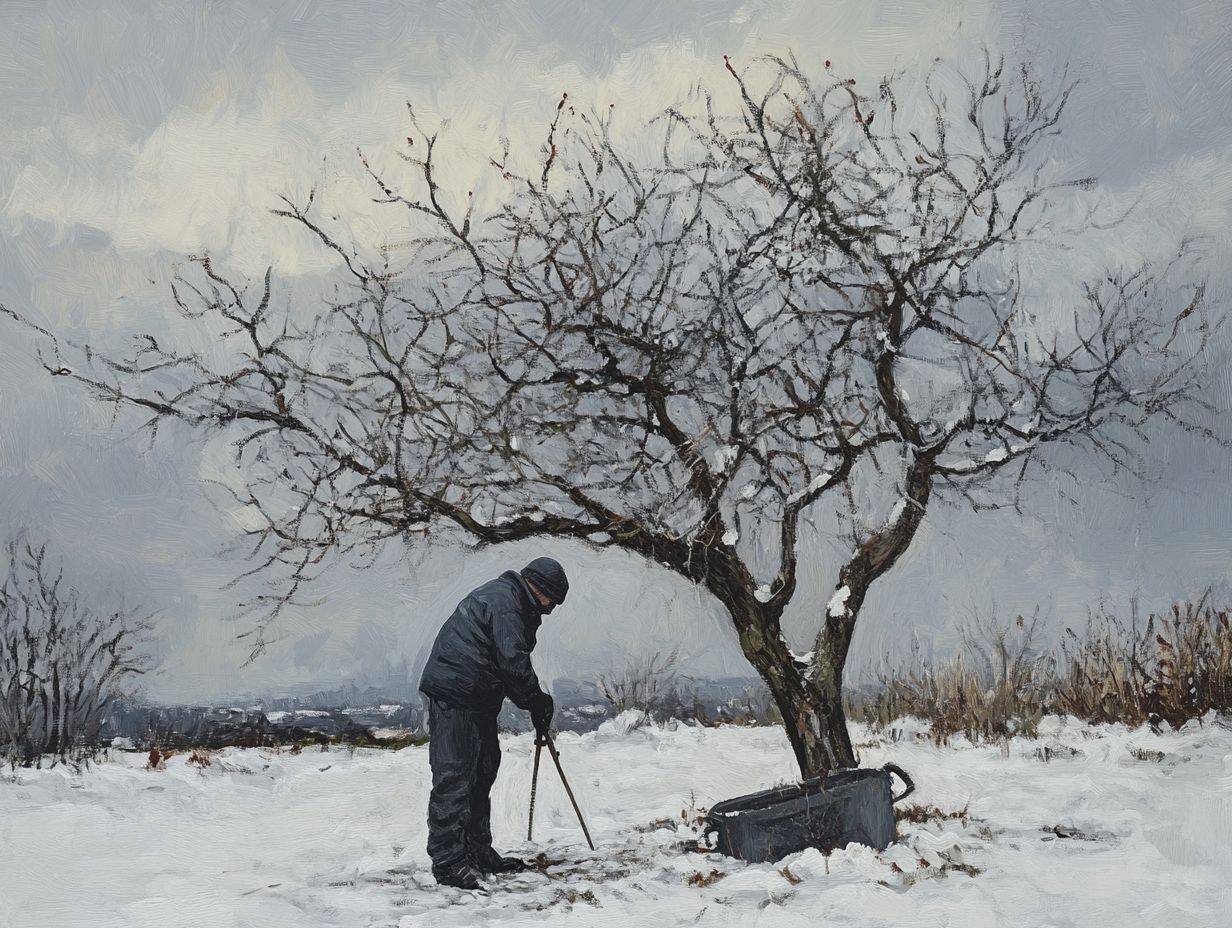
Understanding Winter Pruning
Winter pruning means carefully cutting parts of your plants while they re dormant. These strategic cuts enhance their health and prepare them for spring.
This practice helps keep your shrubs and trees vibrant. It removes dead branches that can hide pests and diseases. By shaping your plants thoughtfully, winter pruning enhances air circulation and minimizes the chances of disease spreading.
Techniques like crown thinning, heading cuts, and rejuvenation pruning each serve unique purposes. Whether you re encouraging new growth or improving sunlight penetration, these methods can transform your landscape.
Ultimately, your careful approach to winter pruning cultivates a robust and thriving garden, preparing each plant to flourish in the upcoming growing season.
Benefits of Pruning in Winter
Pruning in winter boosts plant health. It maximizes fruit production and improves light and air circulation.
Embracing winter pruning can truly transform the way your garden thrives.
Improving Plant Health and Growth
By making precise cuts to young branches, you promote robust development.
This technique improves structure and enhances air circulation and light penetration. Proper thinning reduces the risk of diseases, as overcrowded areas often become havens for pests and fungi.
By skillfully managing your plant s shape, you ensure that each branch has the opportunity to thrive, leading to a healthier and more productive plant when spring rolls around.
When to Prune in Winter
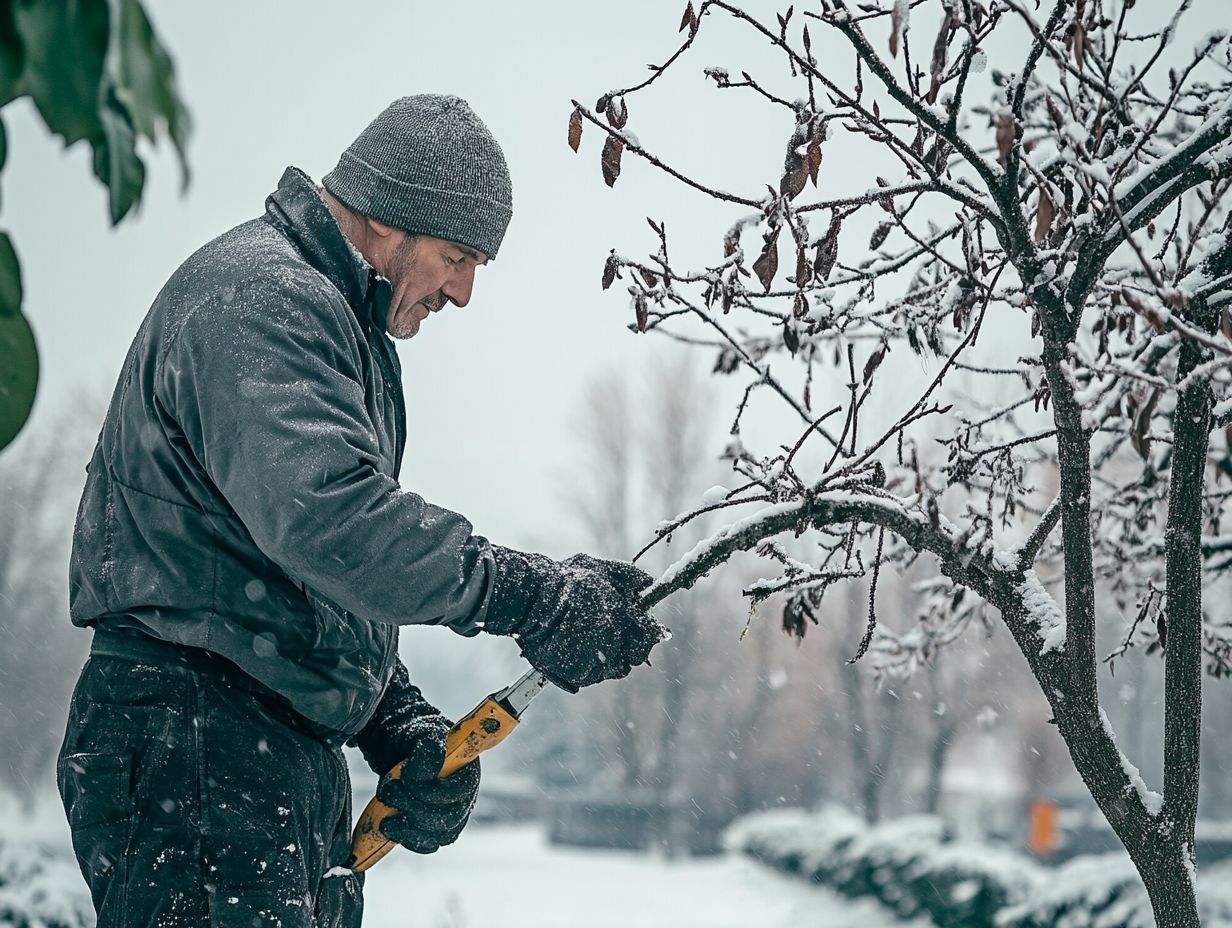
Understanding when to prune in winter is key to success. Pruning at the right time helps plants recover quickly and thrive in the growing season.
It’s important to keep in mind the changes in the seasons that can impact your pruning schedule. This ensures that you provide your plants with the best care possible.
Best Time and Conditions for Pruning
The best time to prune is during winter, particularly when temperatures are consistently below freezing. This keeps your plants dormant and significantly reduces the risk of shock.
Cold conditions set the stage for healthy growth in spring while minimizing stress on your plants. Aim to prune in late winter, just before warmer weather arrives, when the threat of significant frost has passed.
During dormancy, the lack of sap flow allows you to make clean cuts without causing undue harm. Consistent low humidity and dry air improve your chances of making successful cuts, enabling your plants to heal quickly with minimal risk of disease.
Pruning at this optimal time can yield prolific blooms and bountiful harvests as the growing season unfolds.
Tools and Techniques for Winter Pruning
Using the right tools and techniques for winter pruning is crucial for achieving optimal results. From selecting the ideal pruners to making strategic cuts, every step enhances the overall health of your plants.
Recommended Tools and Proper Techniques
Recommended tools for winter pruning include sharp pruners and saws. These tools facilitate clean cuts and minimize stress on your plants.
Having the right tools streamlines the pruning process and plays a vital role in maintaining the overall health of your plants. Bypass pruners, for example, are perfect for cutting branches up to half an inch thick, allowing for precise cuts that heal quickly.
For thicker branches, a hand saw or lopper provides the leverage and control needed for clean cuts that prevent injury to the plant.
Using techniques like making angled cuts and avoiding tearing at the bark can significantly reduce the risk of disease. Familiarizing yourself with these methods helps you avoid common pitfalls like over-pruning or using dull tools, which can lead to unnecessary stress and damage.
Common Mistakes to Avoid
Avoiding common mistakes in winter pruning is crucial for safeguarding your plants and fostering healthy growth. Recognizing what to avoid can greatly influence the success of your garden.
Key Errors to Watch Out For

Preventing damage while fostering growth during winter pruning requires careful assessment of the branches. This process enables you to remove dead branches that could impede healthy growth and spread disease.
As you identify and cut away lifeless limbs, evaluate the overall health of each branch. Make cuts precisely where needed to halt potential issues from worsening.
Paying attention to branches that show signs of pests or disease is essential. Making clean cuts at a 45-degree angle promotes quicker healing and directs growth toward the healthier parts of the plant.
This smart approach reduces stress on your trees, letting them flourish while enhancing airflow and sunlight penetration elements vital for robust growth and overall vitality.
Best Practices for Different Types of Plants
By implementing best practices for winter gardening for various plant types during pruning, you ensure that each species receives the tailored care it needs. This meticulous approach optimizes their structure and enhances their growth potential.
Set the stage for a flourishing garden in the seasons to come! Grab your tools and get started your plants will thank you in spring!
Specific Tips for Trees, Shrubs, and Vines
When it comes to pruning trees, shrubs, and vines in winter, you should pay close attention to the unique needs of each plant type. For instance, while ornamental trees benefit from aesthetic pruning, clematis requires a careful cutback to encourage robust growth.
Understanding these specific requirements can significantly enhance your plants’ overall health and lead to better blooms or fruit production. Take fruit bushes, for example. It s essential to examine their growth patterns and carefully remove older branches to make room for fresh, new growth.
Rejuvenating perennials involves more than just trimming back dead foliage. It’s also about ensuring that ample sunlight reaches the promising shoots below.
By implementing these targeted strategies, you can cultivate a vibrant outdoor space where every plant variety thrives in the upcoming growing season. Start pruning today for a flourishing garden this spring!
Frequently Asked Questions
What are the Best Practices for Pruning in Winter?
Pruning in winter is an important task for maintaining the health and appearance of your plants. Here are six frequently asked questions about the best practices for winter seeding, which include essential winter pruning tips.
1. When is the best time to prune in winter?
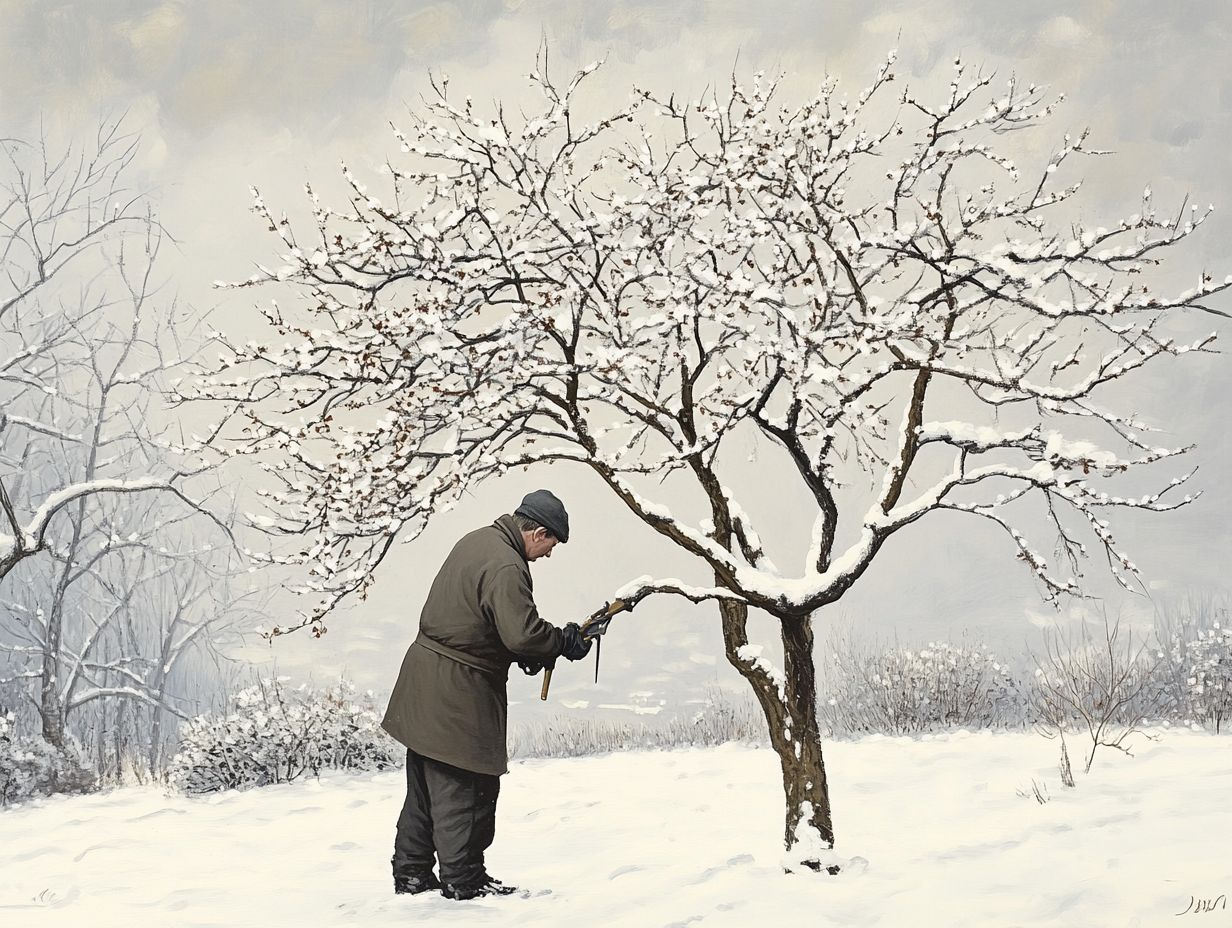
The best time to prune in winter is during the dormant season, which means when plants are not actively growing. This period typically lasts from late fall to early spring.
2. What tools do I need for winter pruning?
Some essential tools for winter pruning include hand pruners, loppers, and pruning saws. Make sure they are clean and sharp to ensure effective strategic cuts and minimize disease spread.
3. What types of plants should be pruned in winter?
In general, deciduous plants, such as trees and shrubs, can be pruned in winter. However, it’s best to research specific plants to determine their particular pruning needs.
4. How much should I prune in winter?
When pruning in winter, it’s important to only remove dead, damaged, or diseased branches. Avoid drastic pruning, as it can weaken the plant and leave it vulnerable to pests and diseases.
5. What are the benefits of pruning in winter?
Pruning in winter improves your plants’ overall health and promotes new growth. It also makes it easier to see the plant’s structure how exciting is that?
6. Are there any precautions to take when pruning in winter?
It’s important to avoid pruning during extremely cold or wet weather, as this can damage the plant and increase its susceptibility to diseases. Always wear protective gear and be cautious when using sharp tools.


